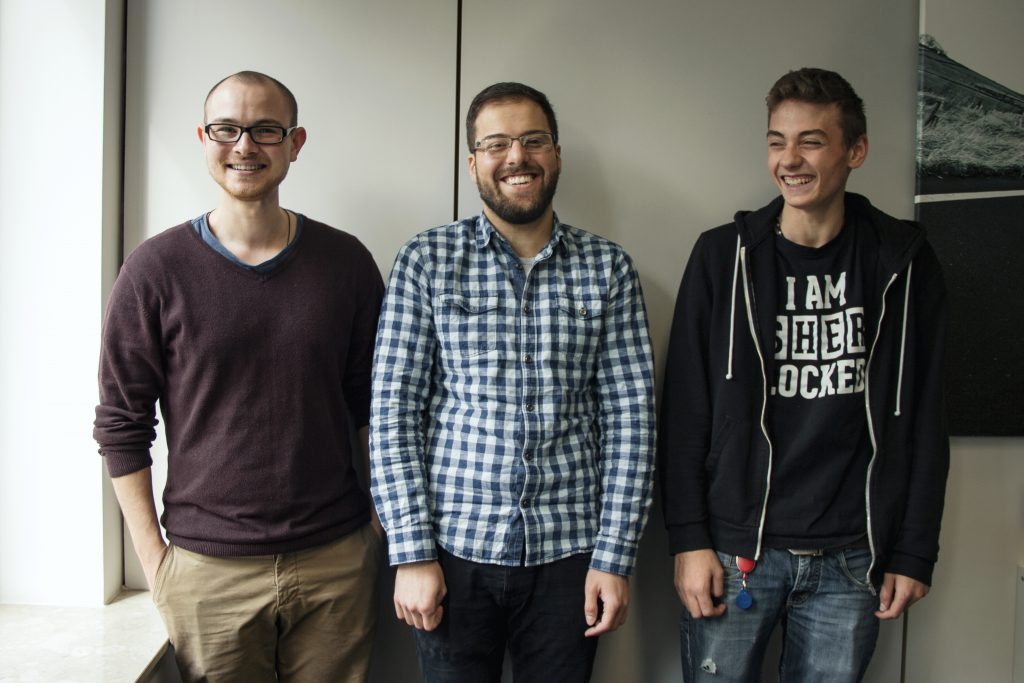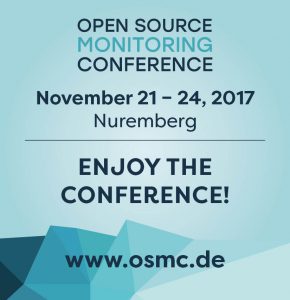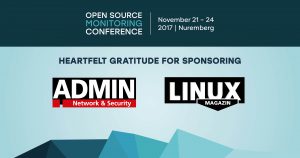Am 01.September 2017 haben wir (Afeef, Killian, Philipp) bei NETWAYS unsere Ausbildung zum Fachinformatiker angefangen. Um uns auf die bevorstehende Arbeit im Professional Service vorzubereiten, bekamen wir gleich in der ersten Woche eine „Linux Basic“-Schulung. Damit wir das Gelernte weiter festigen können, wurde uns ein „LAMP“-Projekt aufgetragen. Ziel war es einen hochverfügbaren Webserver mit einer WordPress-Installation zur Verfügung zu stellen. Wir haben das Projekt in drei Teilbereiche aufgeteilt: LoadBalancer, Webserver und Datenbank. Nach erfolgreicher Zusammenarbeit haben wir das Projekt fertiggestellt und gemeinsam präsentiert.
Um Einblicke in andere Abteilungen zu bekommen, wurden wir in den daurauffolgenden Wochen aufgeteilt. Afeef durfte Managed Service unterstützten indem er ein automatisiertes Grafana-Dashboard mittels Puppet konfigurieren sollte. Besonders gefallen hat Ihm dabei die Hilfsbereitschaft der Kollegen aus Managed Service die Ihm bei Fragen über Puppet sofort geholfen haben. Meine Aufgabe war es derweil einen Maillserver aufzusetzen. Damit der Mailserver auch leicht zu benutzen ist, implementierte ich eine WebGUI mittels Roundcube. Schon stand ein Wechsel zur Events-Abteilung an, die ich im November besuchen durfte. Ich half dabei, dass Schulungen richtig geplant und durchgeführt werden. In dieser Zeit kümmerte sich Killian um die neuen Schulungslaptops und konfigurierte ein neues Backupsystem namens ReaR. Schon stand auch die OSMC im November an, eine Premiere für uns Drei. Damit alle Vorträge auch aufgenommen werden hatten wir die ehrenvolle Aufgabe, als Raumwächter jeden Vortrag aufzunehmen, damit man diesen später anschauen kann.
Das nächste große Highlight war die Teilnahme unserer ersten NETWAYS-Schulung. „Fundamentals for Puppet“ stand auf dem Programm, welche eine komplett neue Erfahrung für uns drei war. Damit meine ich nicht nur die technische Seite sondern auch, wie von NETWAYS gewohnt, die herzliche Umgangsweise und die super Verpflegung.
Damit wir das Gelernte gleich umsetzen können, stand das nächste große Projekt an und zwar mit Puppet. Killians Aufgabe ist es einen LAMP-Stack mittels Puppet zu realisieren, dazu benötigt er das Wissen von unserem ersten gemeinsamen LAMP-Projekt. Afeef kümmert sich derzeit weiter um das Grafana-Dashboard und ich realisiere meinen zuvor erstellten Mailserver mittels Puppet.
NETWAYS Blog
Monitoring – it’s all about integration and automation – OSMC 2017 Day 2
The second day started with „Monitoring – dos and don’ts“ presented by Markus Thiel. Room was already full on the first talk what was not expected when people move from evening event to late lounge and then at 5 o’clock in the morning to the hotel. Event was great great with good food, drinks and chat. But Julia already wrote about that so I will focus on the talks and Markus one was nicely showing „don’ts“ I also recognize from my daily work as consultant and helped with tips how to avoid them. He got deeply into details so I can not repeat everything, but just to summarize the biggest problem is always communication between people or systems, perhaps you already knew this from your daily business.
The second talk I attended was Bodo Schulz talking about automated and distributed monitoring of a continuous integration platform. He created his own service discovery named Brain which discovers services and put them into Redis which is then read by Icinga 2 and Grafana for creating configuration. Pinky is his simple stack for visualisation consisting of containers. Both of them are integrated in the platform, one Brain for every pipeline, one Pinky for every team. If you did not get the reference. watch the intro on youtube. His workarounds for features he missed were also quite interesting like implementing his own certificate signing service for Icinga 2 or displaying License data in Grafana. And of course he had a live demo to show all this fancy stuff which was great to see.
Tom was giving the third talk of the day about automated monitoring in heterogeneous environments showing real life scenarios using the Director’s capabilities. He started with the basics explaining how import, synchronization and jobs work and followed by importing from an old Icinga environment utilizing SQL and the IDO database. In the typical scenario for importing from a CMDB Tom showed typical problems like bad quality of input data and how to workaround with the Director to get a good quality of output. Another scenario explained how to get data from Active Directory for the Windows part of your environment. For VMware users he show the already released vSphere module and also the prototype of the vSphereDB module which adds some more visualization and for AWS users the corresponding module. And the last one showed how to import Excel files using the Fileshipper. And of course he explained how easy it is to create your own import source.
Right after the excellent lunch and the even better event massage Marianne Spiller’s talk „Ich sehe was, was du nicht siehst (… und das ist CRITICAL!)“ (in English „I spy with my little eye something CRITICAL!“) focused on how to get a good monitoring environment with a high user acceptance up and running. Being realistic and show everyone his benefits are the best tips she gave but also she could not provide the one solution that fits all. For more of her tips ranging from technical to organizational I can recommend her blog.
Lennart and Janina Tritschler were talking about distributed Icinga 2 environments automated by Puppet. Really happy to see the talk because Janina adopted Icinga 2 after a fundamentals training I gave about a year ago. They started with a basic introduction of distributed monitoring with Icinga 2 as master, satellite and agent and configuration management with Puppet including exported resources. Afterwards they were diving deeper into the Puppet module for Icinga 2 and how to use it for installation and configuration of the environment. In their demos they included several virtual machines to show how easily this can be done.
In the last break the winner of the gambling at the evening event got his price, a retro game console.
Last but not least I decided for Kevin Honka’s talk „Icinga 2 + Director, flexible Thresholds with Ansible“ in favor of Thomas talking about troubleshooting Icinga2. But I am sure his talk was great as troubleshooting is his daily business as our Lead Support Engineer. Kevin was unhappy with static threshold configured in their Monitoring environment so started to develop a python script to include in his Ansible workflow which modifies thresholds using the Director API. On his roadmap is extending it by creating a Icinga 2 python library usable for others, utilizing this library in a real Ansible module and extending functionality.
Thanks to all speakers, attendees and sponsors leaving today for the great conference, save travels and see you next year on November 5th – 8th for the next OSMC. And of course a nice dinner and happy hacking to all staying for the hackathon tomorrow, I will keep our readers informed on the crazy things we manage to build.

Monitoring – it's all about integration and automation – OSMC 2017 Day 1
Also for the 12th OSMC we started on Tuesday with a couple of workshops on Icinga, Ansible, Graphing and Elastic which were famous as always and afterwards with meet and greet at the evening dinner. But the real start was as always a warm Welcome from Bernd introducing all the small changes we had this year like having so many great talks we did three in parallel on the first day. Also we had the first time more English talks than German and are getting more international from year to year which is also the reason for me blogging in English.
The first talk of the day I attended was James Shubin talking about „Next Generation Config Mgmt: Monitoring“ as he is a great entertainer and mgmt is a really a great tool. Mgmt is primarily a configuration management solution but James managed in his demos to build a bridge to monitoring as mgmt is event driven and very fast. So for example he showed mgmt creating files deleted faster then a user could recognize they are gone. Another demo of mgmt’s reactivity was visualizing the noise in the room, perhaps not the most practical one but showing what you can do with flexible inputs and outputs. In his hysteresis demo he showed mgmt monitoring systemload and scale up and down the number of virtual machines depending on it. James is as always looking for people who join the project and help hacking, so have a look at mgmt (or the recording of one of his talks) and perhaps join what could really be the next generation of configuration management.
Second one was Alba Ferri Fitó talking about community helping her doing monitoring at Vodafone in her talk „With a little help from…the community“. She was showing several use cases e.g. VMware monitoring she changed from passive collection of snmptraps to proactively monitoring the infrastructure with check_vmware_esx. Also she helped to integrate monitoring in the provisioning process with vRealise using the Icinga 2 API, did a corporate theme to get a better acceptance, implemented log monitoring using the sticky option from check_logfiles, created her own scripts to monitor things she was told they could only be monitored by SCOM or using expect for things only having an interactive „API“. It was a great talk sharing knowledge and crediting community for all the code and help.
Carsten Köbke and our Michael were telling „Ops and dev stories: Integrate everything into your monitoring stack“. So Carsten as the developer of the Icinga Web 2 module for Grafana started the talk about his motivation behind and experience gained by developing this module. Afterwards Michael was showing more integration like the Map module placing hosts on an Openstreet map, dashboards, ticket systems, log and event management solutions like Greylog and Elastic including the Icingabeat and an very early prototype (created on the day before) for a module for Graylog.
After lunch which was great as always I attended „Icinga 2 Multi Zone HA Setup using Ansible“ by Toshaan Bharvani. He is a self-employed consultant with a history in monitoring starting with Nagios, using Icinga and Shinken for a while and now utilizing Icinga 2 to monitor his costumer’s environments. His ansible playbooks and roles showed a good practical example for how to get such a distributed setup up and running and he also managed to explain it in a way also people not using Ansible at all could understand it.
Afterwards Tobias Kempf as the monitoring admin and Michael Kraus as the consultant supporting him talked about a highly automated monitoring for Europe’s biggest logistic company. They used omd to build a multilevel distributed monitoring environment which uses centralized configuration managed with a custom webinterface, coshsh as configuration generator and git, load distribution with mod_gearman and patch management with Ansible.
Same last talk like every year Bernd (representing the Icinga Team) showed the „Current State of Icinga“. Bernd shortly introduced the project and team members before showing some case studies like Icinga being deployed on the International Space Station. He also promoted the Icinga Camps and our effort to help people to run more Icinga Meetups. Afterwards he started to dive into technical stuff like the new incarnation of Icinga Exchange including full Github sync, the documentation and package repository including numbers of downloads which were a crazy 50000 downloads just for CentOS on one day. Diving even deeper into Icinga itself he showed the new CA Proxy feature allowing multilevel certificate signing and automatic renewal which was sponsored by Volkswagen like some others, too. Some explanation on projects effort on Configuration management and which API to use in the Icinga 2 environment for different use cases followed before hitting the topic logging. For logging Icinga project now provides output for Logstash and Elasticsearch in Icinga 2, the Icingabeat, the Logstash output which could create monitoring objects in Icinga 2 on the fly and last but not least the Elasticsearch module for Icinga Web 2. In his demos he also showed the new improved Icinga Web 2 which adds even more eye candy. Speaking about eye candy also the latest version of Graphite module which will get released soon looks quite nice. Another release pending will be the Icinga Graphite installer using Ansible and Packaging to provide an easy way to setup Graphite. So keep an eye on release blogposts coming next weeks.
It is nice to see topics shift through the years. While the topics automation and integration were quite present in the last years it was main focus of many talks this year. This nicely fits my opinion that you as a software developer should care about APIs to allow easy integration and as an administrator you should provide a single interface I sometimes call „single point of administration“.
Colleagues have collected some pictures for you, if you want to see more follow us or #osmc on Twitter. So enjoy these while I will enjoy the evening event and be back tomorrow to keep you updated on the talks of second day.

Heartfelt Gratitude for Sponsoring – The Linux Magazin and The Admin Magazine
The Linux Magazin and The Admin Magazine, The NETWAYS family want to extend a heart-felt thank you for your allegiance to making the event roaring. Your liberal handout soothes our vision for OSMC 2017 conference success.
Here’s to the start of a great season. Thank you again for your generous sponsorship. We hope that we will live up to our achievements for years. We promise to keep you updated of our progress.




















